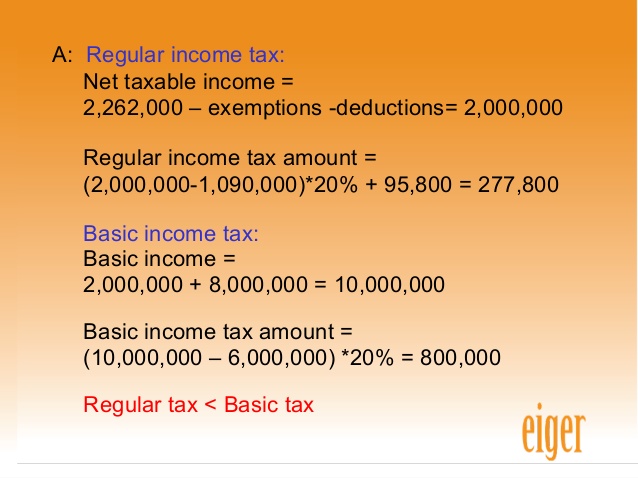
Breakeven analysis shows the effect of increased investments in fixed assets that lower variable costs but increase fixed costs. A relatively
recent innovation in product planning and design is called target costing. In the context of the
Basic Profit Equation, target costing sets a goal for profits, and solves for
the unit variable cost required to achieve those profits. The design and
manufacturing engineers are then assigned the task of building the product for
a unit cost not to exceed the target. Hence, setting the sales price comes last in the traditional approach,
but it comes first in target costing.
Further, the information presented is in a simple form and therefore is clearly understandable even to a layman. In C.V.P. relationship study one must define volume or activity accurately. A series of break-even charts may be necessary where alternative pricing policies are under consideration.
Cost Volume Profit Analysis
For instance, in the case of A company, if the demand falls below the break-even point even by one unit, the company incurs loss at the rate of Rs.1 a unit. Though it is not possible to say, from the angle, the rate at which the company earns profit, it is possible to say whether it is at higher or lower rate depending upon the degree of the angle. Company with larger angle earns profit at a higher rate once it crosses the break-even point than the company with smaller angle of incidence. The above relationship indicates that once the break-even sales amount is achieved, contribution from all additional sales generates profits only. Where profitability is high, increase of volume of sales is possible by spending more in advertisement and sales promotion. (iii) All costs are capable of being bifurcated into fixed and variable elements.
With $20,000 fixed costs/divided by the contribution margin ratio (.4) we arrive at $50,000 in sales. Therefore, if we ring up $50,000 in sales this will allow us to break even. CVP analysis also helps manufacturers decide on selling prices and how many units to produce. Businesses use CVP analysis to play out “what-if” scenarios, plugging projected sales numbers into the CVP equation to see how it affects the business’s bottom line. The break-even chart shows the relative importance of the fixed cost in the total cost of a product; and if the fixed costs are high, they can be controlled by the management.
Cost Volume Profit Analysis – 12 Important Assumptions
CVP analysis assumes no change in the inventory quantities, during the period. That is, opening inventory units equal cost volume profit meaning the closing inventory units. This also means that units produced during the period are equal to units sold.
What is meant by cost volume profit?
Cost-volume-profit (CVP) analysis is a method of cost accounting that looks at the impact that varying levels of costs and volume have on operating profit.
Thus, it is a managerial tool for control and reduction of costs, elimination of wastage, and achieving better efficiency. Break-even point is the point at which contribution is just sufficient to recover fixed costs; since whatever fixed costs are incurred in the business, these are absorbed by production till this point. Whatever production takes place beyond this level, it will yield additional contribution in the form of profit only. In other words, increase in contribution means increase in profit.
Cost-Volume-Profit Analysis Description *
In other words, the large widgets generate a higher
contribution margin per hour on the machine that constitutes the capacity
constraint of the factory. Cost-volume-profit analysis may be defined as a managerial tool for profit planning that reveals the interrelationship among cost, the volume of production, loss, and profit earned. These are linear because of the assumptions of constant costs and prices, and there is no distinction between units produced and units sold, as these are assumed to be equal. Note that when such a chart is drawn, the linear CVP model is assumed, often implicitly.
Aurora Cannabis Announces Fiscal 2023 Third Quarter and Files … – PR Newswire
Aurora Cannabis Announces Fiscal 2023 Third Quarter and Files ….
Posted: Wed, 14 Jun 2023 11:00:00 GMT [source]
Impractical to assume sales mix remain constant since this depends on the changing demand levels. The assumption of linear property of total cost and total revenue relies on the assumption that unit variable cost and selling price are always constant. In real life it is valid within relevant range or period and likely to change. The focus may be on a single product or on a sales mix of two or more different products. The cost volume profit chart, often abbreviated CVP chart, is a graphical representation of the cost-volume-profit analysis. In other words, it’s a graph that shows the relationship between the cost of units produced and the volume of units produced using fixed costs, total costs, and total sales.
What is the meaning and objectives of cost volume profit?
Cost-volume-profit or break-even analysis objectives
To forecast profits: helps to identify profit relationships, costs and volumes for determining relative profitability and to compare inter-company profitability. To set budgets: is useful in setting up flexible budgets that indicate costs at different activity levels.
